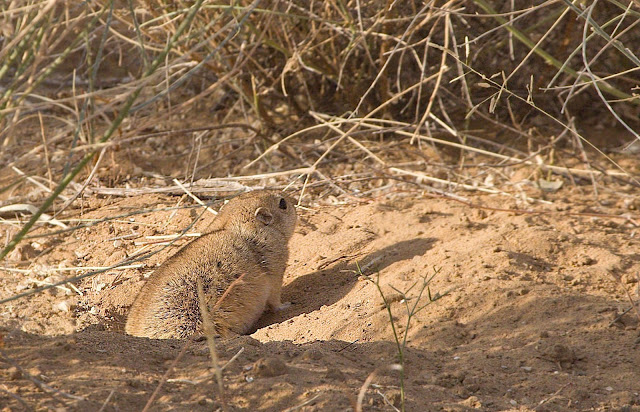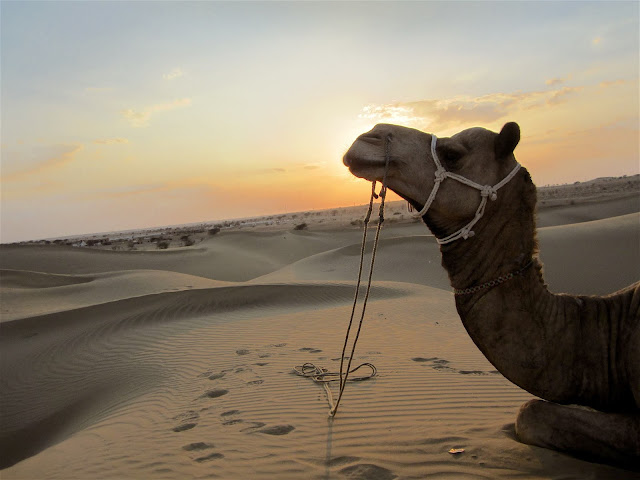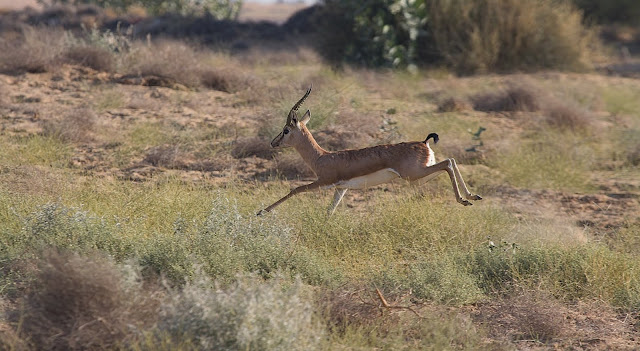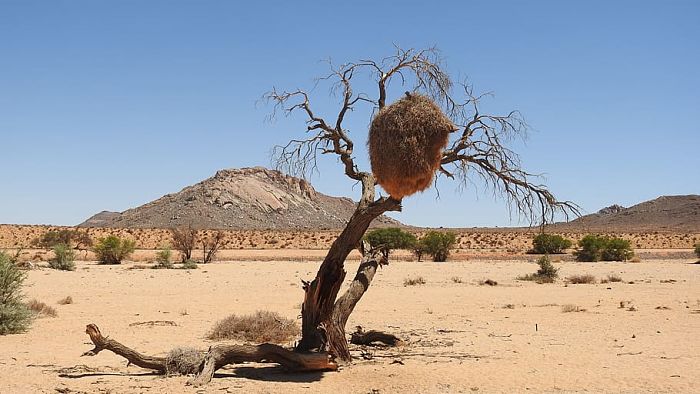Desert National Park is located in the Thar Desert Jaisalmer of Rajasthan. It is 12 km from Jaisalmer district. Desert National Park is not only the largest park in the state but there is no equivalent national park in India.
The total area of the park is 3162 square kilometers. A large part of the park is filled with faded salt lakes and thorny bushes. Along with this, there is also an abundance of sand dunes.
Desert National Park Jaisalmer Rajasthan
20 percent of the park is decorated with sand dunes. The major area of the park is lined with steep cliffs, small salt lake foothills, paved sand dunes, and wastelands.
The most special thing about this park is that the park is endless to see and covers a vast area extending from the Indo-Pakistan border to Jaisalmer/ Barmer. Desserts National Park is located close to the Thar Desert and despite its ecosystem being hard and fragile, birds of this park are found only in very few.
Despite a delicate ecosystem, there is an abundance of birdlife here. The region is a haven for migratory and resident birds of the desert. Many types of hawks and vultures are common among them. Sand hens are seen near small ponds or lakes.
The endangered Great Indian Bustard (Son Chiraiya), a magnificent bird, is found here in relatively good numbers. It migrates locally in various seasons. The time between November and January is the best time to visit here.
The park is a collection of fossils of animals and plants 160 million years old. Some fossils of dinosaurs have been found in this area, which are six million years old.

Anyway, thousands of bird lovers come from all over the world to see this species. Apart from the Great Indian Bustard, the park is home to a variety of birds that attract both bird lovers and conservationists alike.
The biggest attraction of the park is the bird called Great Indian Bustard (Son Chiraiya), an endangered species and found only in India. The park is one of the last places where this species can be found in good numbers.
The endangered Indian bustard is a major attraction of Desert National Park. In gray and white, the bustard is one meter tall and has long legs and a long neck. A bird living on this long and beautiful ground can be seen near the Sudashree Waterhole.
The Thar Desert often called the ‘sea of sand’, is spread over a large area in western Rajasthan. Thar’s fragile ecosystem supports unique and diverse wildlife. In this vast ocean of sand, it is a famous national park, which is a classic example of the Thar Desert and its diverse wildlife ecosystem.
The vegetation is sparse here, but the bushes and intake bushes can be seen here and there. The landscape is filled with high rocks and solid salt lake bed, intermediate areas, and both types of sand dunes – movable and immovable.
The sand dunes form about 20% of this vast expanse. Padam Talav Lake, Rajbagh Lake, Milak Lake, etc. are the main water source for the wildlife living in this harsh environment.
Among the flora and plant species of the park are Dhok, Rong, Salai, and Palm trees. The vegetation is scattered and dispersed. Small plots filled with mud bushes and sev grass also appear here and there.

Wildlife of Desert National Park is Black Buck (Chinkara), Chinkara, Desert Fox, Bengal Fox, Indian Wolf, Desert Cat, Rabbit, etc. Snakes are also found here. Several types of lizards, chameleons, Russel vipers, karait, and other species of poisonous snakes are also found here.
There are heaps of fossils of animals and plants in the desert national park. It is said that these fossils are 180 million years old. Six million-year-old fossils of dinosaurs are also found in this area.
The Rajasthan government amended its notification number F-3 (1) (73) of this garden in Jaisalmer district on 4 August 1980. Through this, it was notified as Desert National Park ie Desert National Park.
Earlier it was known as Desert Wildlife Sanctuary. Due to its environmental and botanical importance, it has been accorded the status of a national park to conserve, promote and develop the wildlife living in the park and the environment of this national park.
Best Time To Visit Desert National Park Jaisalmer Rajasthan
If you want to visit Desert National Park, then the best time to visit the park is from the months of October to March. Given the climate of Rajasthan, the summer season is not suitable for visiting this region.
During the summer, the daytime temperature is very high and usually rises to about 42 degrees Celsius in the summer.
Nights are relatively cold in dry desert climate. In Jaisalmer, the winter temperature in the daytime is around 24 ° C and at night the temperature is 7 to 8 ° C.
Desert National Park Jaisalmer is open from 10:00 am to 5:00 pm

Jeep Safari Desert National Park Jaisalmer Rajasthan
Seeing attractive birds in the sky, doing a thrilling and adventurous jeep safari can prove to be very special for you. The safari runs on a 12-km trail and takes about 30 minutes to complete. Jeep and vehicles are valid for wildlife safari and no outdoor vehicles are allowed.
Camel Safari Desert National Park Jaisalmer Rajasthan
If you want to have a different experience in Desert National Park, then a lead-back Camel Safari is a great way to do this. In this camel safari, it can be a great experience to sit atop a galley-clad camel and ride on rolling dunes and barren plains. For this, you have to pay a fee of up to Rs 200.
Safari Charge Desert National Park Jaisalmer Rajasthan
Jeep Safari – Rs 100
Camel Safari – 200 rupee
Entry Fees Desert National Park Jaisalmer Rajasthan
To visit Desert National Park, all tourists will have to pay an entry fee of Rs 100 per person. If you want to rent a jeep or a car, then it costs 100 rupees. To hire a coach, you have to pay an extra 200 rupees.
This is the best place for photography in Jaisalmer Rajasthan.
How to reach Desart National Park
Nearest railway station: Jaisalmer 12 Km
Nearest Airport: Jaisalmer 12 KM

My self Dev Satish. I’m an Author and Founder of tourism-rajasthan.com. I’m from Rajasthan and If I talk about my Education then I’m Law Graduate. I love doing work that makes me happy, that’s why I love traveling. you will find Rajasthan travel ideas & tips on this blog.
